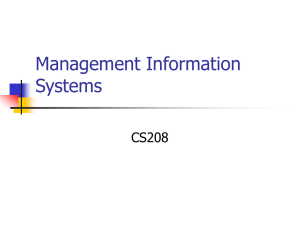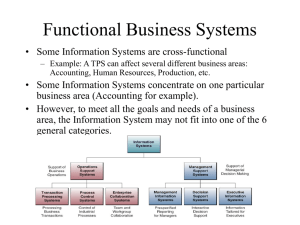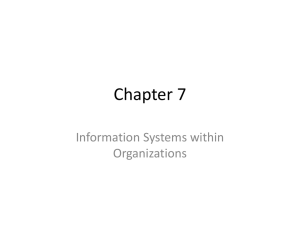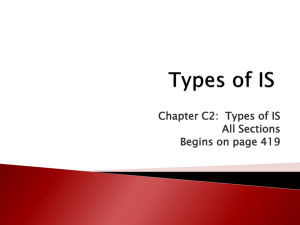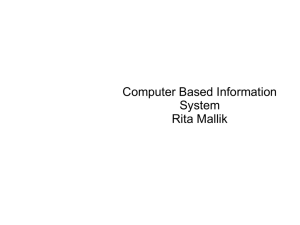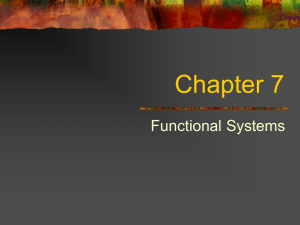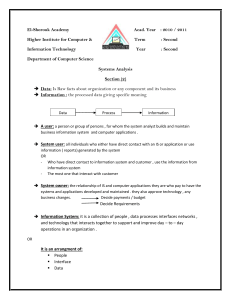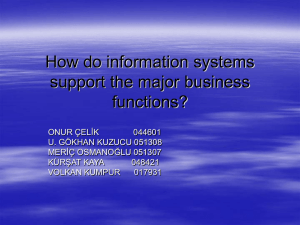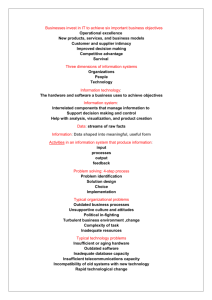Types of Information System
advertisement
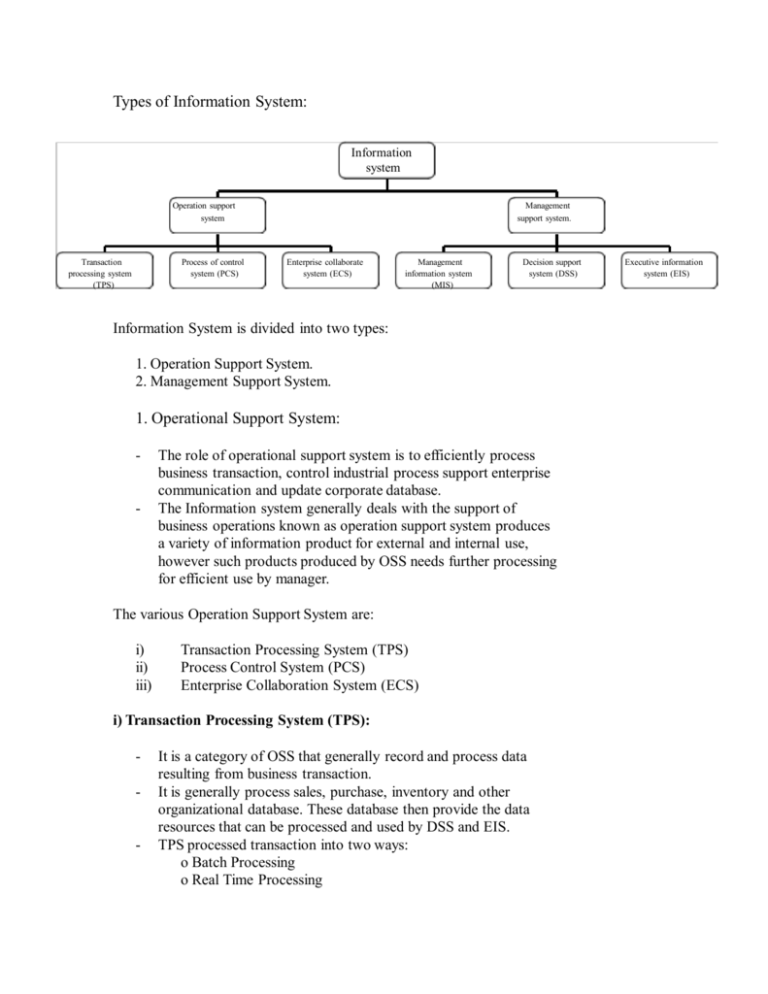
Types of Information System: Information system Operation support system Transaction processing system (TPS) Process of control system (PCS) Management support system. Enterprise collaborate system (ECS) Management information system (MIS) Decision support system (DSS) Information System is divided into two types: 1. Operation Support System. 2. Management Support System. 1. Operational Support System: - - The role of operational support system is to efficiently process business transaction, control industrial process support enterprise communication and update corporate database. The Information system generally deals with the support of business operations known as operation support system produces a variety of information product for external and internal use, however such products produced by OSS needs further processing for efficient use by manager. The various Operation Support System are: i) ii) iii) Transaction Processing System (TPS) Process Control System (PCS) Enterprise Collaboration System (ECS) i) Transaction Processing System (TPS): - - It is a category of OSS that generally record and process data resulting from business transaction. It is generally process sales, purchase, inventory and other organizational database. These database then provide the data resources that can be processed and used by DSS and EIS. TPS processed transaction into two ways: o Batch Processing o Real Time Processing Executive information system (EIS) Batch Processing: Data is accumulated over a period time and processed periodically. Real Time Processing: Data is immediately processed after a transaction occurs. Ex: Sales and Inventory Processing ii) Process Control System (PCS): - It is a category of OSS in which decision about a physical production process are automatically made by computer through routine decisions that control operational process. Ex: A petroleum refining center uses electronic sensors which are linked to the computers to continuously monitor chemical processes and make instant adjustments that control the refined process. iii) Enterprise Collaboration System (ECS): - - It is the information system that uses a variety of information technology to help the people to work together. ECS helps to collaborate and communicate ideas, share resources and co-ordinate work effort of an organization. The aim of an ECS is to use the information technology to enhance productivity and creativity of organization and work group in an organization. Ex: E-mail, chat, video conferencing etc. 2. Management Support System: - - This is generally deals with providing information and support for effective decision making. It refers to computer technology and system theory to data processing in an organization. It helps in designing system frameworks for organizing information system application. It helps in management decision making and processing of data generated by business operation. The various management support systems: i) ii) iii) Management Information System (MIS) Decision Support System (DSS) Executive Information System (EIS) i) Management Information System (MIS): - - MIS is a form of MSS that provides managerial enduser with information product that support their day to day decisions. It provides a variety of information in the form of report and display to management that contain information specified in advance by manager. Information is generally provided on demand or periodically to the managers. Ex: Sales manager may use their network computer, net web browser to get instant display of the sales, result of their product and access their daily sales report. ii) Decision Support System (DSS): - - Decision support systems are computer based information systems that provide interactive information support to managers and business professionals during the decision making process. It provides managerial enduser with information in an interactive manner i.e, analytical modeling, data retrieval information presentation capability. Ex: Product pricing, Risk Analysis iii) Executive Information System (EIS): - - An Information System that provides Strategic information tailored to the needs of executives and other decision makers (top management). It provides top management with immediate and easy access to select information about key factors that are critical to organizational strategic objectives. Ex: The top level executives may use the touch screen to instantly view text and graphics that display the key areas of the organization. ************************************************************************

